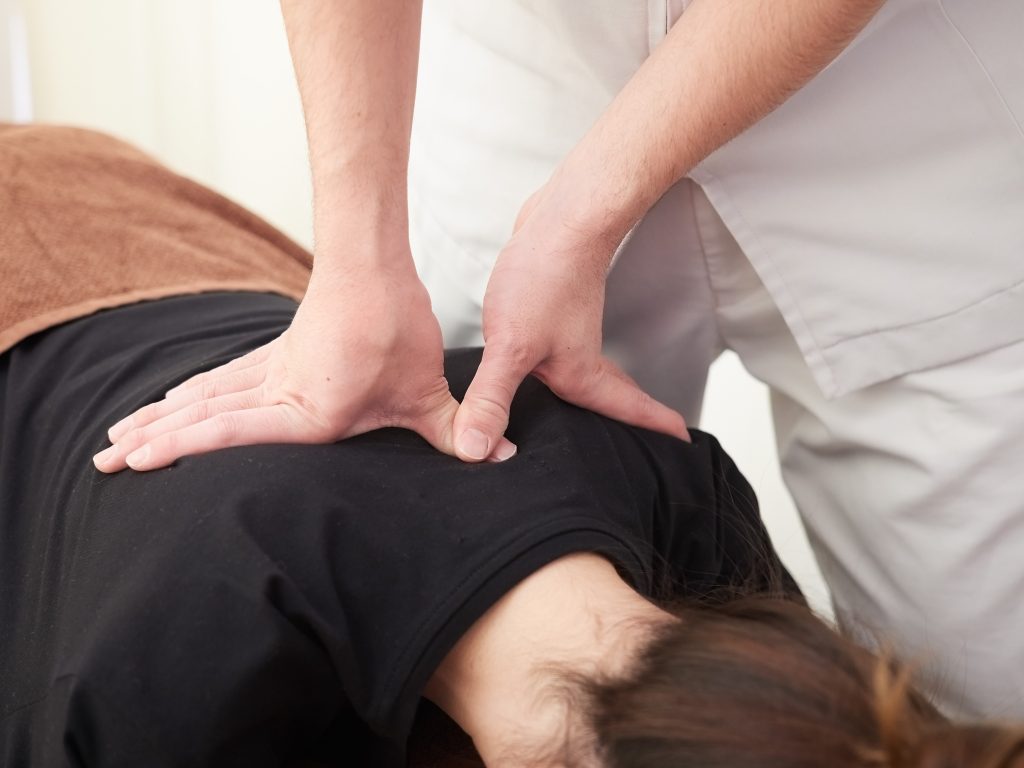Chronic pain is an overwhelming challenge that affects millions of people worldwide, making daily activities seem like insurmountable obstacles. If you’re one of those struggling with persistent pain from conditions like fibromyalgia, arthritis, or chronic back pain, you know how crucial it is to find effective relief. Manual therapy, a hands-on approach used by physical therapists, has emerged as a promising solution for managing chronic pain. This article delves into how manual therapy can help alleviate chronic pain and improve your quality of life.
Understanding Chronic Pain
Chronic pain is pain that persists for weeks, months, or even years. Unlike acute pain, which signals injury and subsides as the body heals, chronic pain is often complex, with underlying causes that can be difficult to pinpoint. Conditions like fibromyalgia, arthritis, and chronic back pain fall into this category and can significantly impact your physical and emotional well-being.
What is Manual Therapy?
Manual therapy encompasses a range of hands-on techniques used to manipulate and mobilize the muscles, joints, and connective tissues. Physical therapists and chiropractors commonly employ this method to reduce pain, increase mobility, and enhance overall function. Techniques include soft tissue mobilization, joint mobilization, and myofascial release, among others.
How Manual Therapy Helps Manage Chronic Pain
1. Reducing Muscle Tension and Spasms
One of the primary benefits of manual therapy is its ability to relieve muscle tension and spasms. By applying targeted pressure and stretching techniques, therapists can help relax tight muscles, which often contribute to chronic pain. This is particularly beneficial for conditions like fibromyalgia, where muscle pain and tenderness are prevalent.
2. Improving Joint Mobility
For individuals with arthritis, joint stiffness and limited mobility are significant concerns. Manual therapy can enhance joint function by gently mobilizing the joints, reducing stiffness, and improving range of motion. This can lead to better physical function and reduced pain levels.
3. Enhancing Circulation
Manual therapy techniques such as massage and myofascial release improve blood circulation to the affected areas. Enhanced circulation helps deliver oxygen and nutrients to tissues while removing waste products, promoting healing and reducing pain. This is especially helpful for chronic back pain sufferers.
4. Breaking Up Scar Tissue
After injuries or surgeries, scar tissue can form and restrict movement, leading to chronic pain. Manual therapy can help break down scar tissue, improving flexibility and reducing discomfort.
5. Releasing Endorphins
Manual therapy can stimulate the release of endorphins, the body’s natural painkillers. These chemicals help reduce pain perception and promote a sense of well-being, providing relief for those suffering from chronic pain conditions.
Manual Therapy Techniques for Chronic Pain
1. Soft Tissue Mobilization
This technique involves the therapist using their hands to manipulate the soft tissues of the body, including muscles and fascia. It helps reduce muscle tension, improve circulation, and promote relaxation.
2. Joint Mobilization
Joint mobilization involves the therapist applying controlled movements to the joints to improve mobility and reduce pain. This is particularly useful for individuals with arthritis or joint stiffness.
3. Myofascial Release
Myofascial release targets the fascia, the connective tissue surrounding muscles and organs. By applying sustained pressure to areas of tension, therapists can release tightness and improve mobility.
4. Trigger Point Therapy
Trigger points are hyperirritable spots within a muscle that can cause referred pain. Therapists use specific pressure techniques to release these points, alleviating pain and improving function.
5. Craniosacral Therapy
This gentle technique involves the therapist applying subtle pressure to the skull and spine to release tension and promote relaxation. It can be beneficial for conditions like fibromyalgia and chronic headaches.
Conditions Benefited by Manual Therapy
1. Fibromyalgia
Fibromyalgia is characterized by widespread musculoskeletal pain, fatigue, and tenderness in localized areas. Manual therapy can help reduce pain, improve sleep quality, and enhance overall function by addressing muscle tension and promoting relaxation.
2. Arthritis
Arthritis involves inflammation and stiffness of the joints, leading to pain and reduced mobility. Manual therapy can help maintain joint function, reduce stiffness, and alleviate pain, improving the quality of life for arthritis sufferers.
3. Chronic Back Pain
Chronic back pain is a common issue that can significantly impact daily activities. Manual therapy techniques, such as spinal manipulation and myofascial release, can help reduce pain, improve mobility, and enhance overall spinal health.
The Role of the Physical Therapist
A skilled physical therapist plays a crucial role in delivering manual therapy. They assess your condition, identify the sources of pain, and develop a personalized treatment plan. Regular sessions, combined with home exercises and lifestyle modifications, can lead to significant improvements in pain management and overall well-being.
Combining Manual Therapy with Other Treatments
Manual therapy is often most effective when combined with other treatment modalities. These may include:
1. Exercise Therapy
Regular exercise, tailored to your condition, can strengthen muscles, improve flexibility, and reduce pain. Your therapist can guide you on appropriate exercises to complement manual therapy.
2. Pain Education
Understanding the nature of chronic pain and learning coping strategies can empower you to manage your condition more effectively. Pain education sessions, often provided by therapists, can be an invaluable resource.
3. Medication
In some cases, medications may be necessary to manage pain. Your healthcare provider can work with you to find the right balance of medication and manual therapy to achieve optimal results.
4. Lifestyle Modifications
Making lifestyle changes, such as improving posture, incorporating stress management techniques, and maintaining a healthy diet, can support the benefits of manual therapy and enhance overall pain management.
Conclusion
Manual therapy offers a holistic approach to managing chronic pain, providing relief and improving quality of life for individuals with conditions like fibromyalgia, arthritis, and chronic back pain. By reducing muscle tension, improving joint mobility, enhancing circulation, breaking up scar tissue, and releasing endorphins, manual therapy can address the multifaceted nature of chronic pain. Working with a skilled physical therapist and combining manual therapy with other treatments can lead to significant improvements, helping you reclaim your life from chronic pain.
Check out our Facebook for more details and options!
FAQs
Is manual therapy painful?
Manual therapy should not be painful. Some techniques may cause mild discomfort, but your therapist will adjust the pressure to ensure your comfort.
How many sessions of manual therapy will I need?
The number of sessions varies depending on your condition and response to treatment. Your therapist will create a personalized plan based on your needs.
Can manual therapy be used alongside medication?
Yes, manual therapy can complement medication. Your healthcare provider will work with you to determine the best combination of treatments.
Are there any side effects of manual therapy?
Side effects are rare but can include temporary soreness or bruising. Your therapist will discuss any potential risks before starting treatment.
Is manual therapy suitable for everyone?
Manual therapy is generally safe for most people, but it may not be suitable for individuals with certain medical conditions. Your therapist will assess your situation to ensure it’s appropriate for you.






